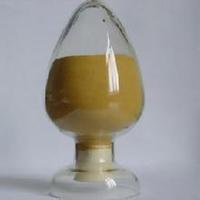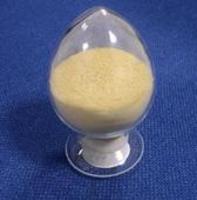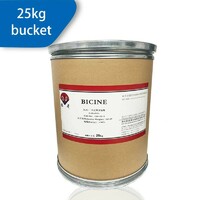Glycine
English Name: Aminoacetic acid
Chinese Name: Glycine
Chinese alias: Glycine; amino acetic acid, amino acetic acid
English alias: Gly; Amino acetic acid; Aminoethanoic acid; Glycine
Linear molecular formula: NH2CH2COOH
CAS number: 56-40-6
Molecular formula: C2H5NO2
Molecular weight: 75.07
The content of 98.6%
Relative density: 1.595[1]
The melting point of 182 DEG C: [1]
Description: white crystal or crystalline powder. Sweet. Soluble in water, slightly soluble in pyridine, insoluble in ether.
Melting point: 182 C density: 1.595 boiling point: 233 degrees C[1]
Food grade: kraft paper or paperboard barrel, a packaging net weight 25KG.
Pharmaceutical grade: paperboard barrel, barrel net weight 25KG.
Feed grade and industrial grade: woven bag, net weight of each bag is 25KG.
[Transport]: prevent sunlight and rain, not with the toxic, harmful substances with transport. According to the provisions of general chemicals storage.
[storage]: sealed, using plastic bags, PP woven bag, sack coat or a round barrel packaging, 25kg packaging. Stored in a cool ventilated and dry place.
Risk description
Danger of code: Xi
Risk level: R33
Security level: S22-24/25
Physical and chemical properties:
White monoclinic crystal systems, or the six party, or white crystalline powder. Odorless, with special taste. The relative density is 1.1607. The melting point of 248 DEG C (decomposition). PK'1
(COOH) 2.34, pK'2 (N+H3) 9.60. Soluble in water, solubility in water: 25 DEG C for 25g/100ml; 50 degrees at 75 deg.c for 39.1g/100ml; 54.4g/100ml; 100 DEG C for 67.2g/100ml. Highly insoluble in
ethanol, dissolved in ethanol about 100g 0.06g. Almost insoluble in acetone and ether. With hydrochloric acid to produce hydrochloride. PH (50g/L solution, 25 C) = 5.8 ~ 6.4
The quality standard of HGB 3075-79
A molecular weight of 75.07
The structure of simple type NH2CH2COOH
Glycine has a unique sweet taste, can ease the acid and alkali taste, cover the added saccharin and sweet bitter food reinforced. If human body intake of glycine content is too high, not only can
not be absorbed by the human body, will break the balance of the body and the absorption of amino acids and the effects of other amino acid absorption, lead to nutritional imbalance and health
effects. With glycine as a milk beverage containing the production of the main raw material, the normal growth of children and adolescent development is very easy to bring adverse effect.
The physiological role of glycine:
In the central nervous system, especially in the spine, glycine is an inhibitory neurotransmitter. If glycine receptors are activated, chloride ions into cause inhibitory postsynaptic potential by
ion receptor of nerve cells. Brucine are antagonists of these ion acceptor. In mice the LD50 index is 0.96 mg / kg body weight, the cause of death was hyper excitability. In the central nervous
system with glycine and glutamic acid is an agonist.
Synthesis of glycine by industrial amino acetic acid chloroacetic acid ammoniation process by the purification process of water dissolving, activated carbon decolorization recrystallization of food
additives for glycine, formaldehyde, hydrogen cyanide and water can be synthesized with glycine:
Polarity: Glycine from the overall perspective is a polar molecule (of all amino acids are polar), but it is a nonpolar amino acid. This is because the judgment of one amino acid polarity is based
on the properties of the R based, rather than the entire molecule. Glycine branched chain is a hydrogen atom to classify it as a hydrocarbon chain, non polar. Similar, although it is easy to
dissolve in water, but the hydrophobic amino acid.
Of course there is between people that side chain between glycine polarity and non polarity, R basis it is a hydrogen atom, the less polar amino and carboxy strong influence. (Wang Jingyan third
edition biochemistry volume 127 pages) but in biology in general can be divided into non polarity.
Pharmaceutical analysis
Method name: Glycine API - glycine - Determination of non aqueous titration method
Scope of application: content of the method for the determination of glycine in the raw material drug by titration method.
The method is applicable to glycine raw material medicine.
The principle of the method: the sample was dissolved in anhydrous formic acid, acetic acid as ice, potentiometric titration, titration with perchloric acid titration solution, and the blank test
calibration titration results, according to the amount of titrant used, calculation of the content of glycine.
Food grade












